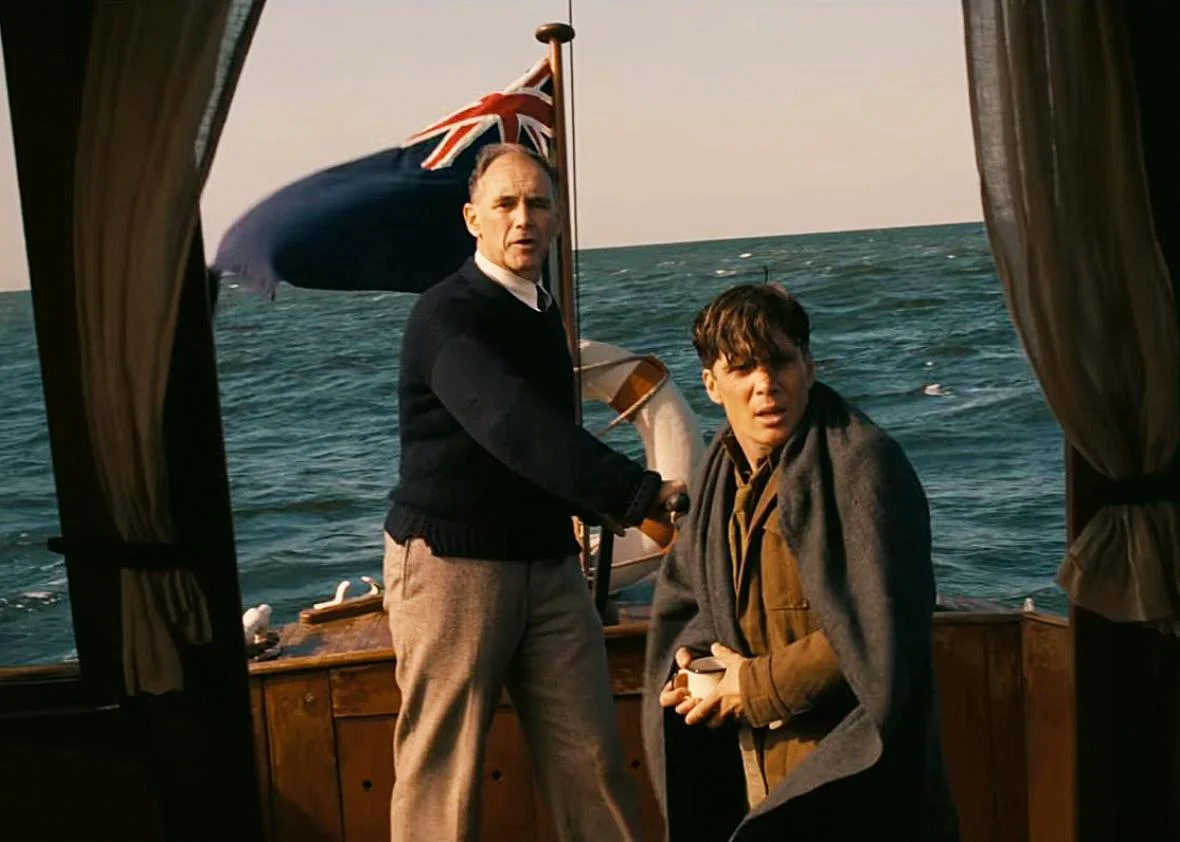Dunkirk, released in 2017, is a gripping portrayal of the experience of British soldiers trapped on the beaches of Dunkirk during World War II. In early 1940, over 400,000 Allied troops were overwhelmed by Axis powers, cut off from any aid and surrounded by hostile forces. These soldiers awaited deliverance on Dunkirk beach as their enemies continued to encroach each day. What followed was nothing short of a miracle; hundreds of civilians crossed the English Channel to Dunkirk on any boat they had in answer to the Royal Navy’s plea for help. With the support of these civilian volunteers, the Navy was successfully able to rescue an unprecedented 338,000 soldiers from destruction at Dunkirk. The movie portrays this remarkable feat, simplifying it to a deeply human level that any viewer can empathize with.
Dunkirk’s usage of multiple different narrative perspectives is part of why it is such a compelling film. Director Christopher Nolan takes the audience through the lives of a group of young soldiers trapped on Dunkirk beach, a boat of British citizens crossing the Channel to rescue the troops, and two Royal Air Force pilots attempting to coordinate an attack from the air. This removes the emphasis of war from the abstract big-picture of world powers in conflict and places it on a basic human level. The soldiers aren’t ruthless killers out for blood; they’re scared young boys who fear for their lives. Although there are still elements of a typical war film present in Dunkirk like its staggering scenes of explosions, the heart of the movie is in its characterization and emotional pull.
One of the most poignant moments in the movie takes place far from the battlefield. The civilian boat, a key narrative setting in the film, features three characters: an old man named Mr. Dawson, his son Peter, and Peter’s friend George. None among the group have any experience with war, and yet they all resolve to aid the war effort, attempting to extract men from Dunkirk. For George and Peter, two schoolboys, this initially seems nothing more than an exciting adventure. However, the mood quickly shifts when their boat approaches a stranded soldier from Dunkirk who had been victim to an explosion at sea. The man is deeply traumatized and shell-shocked, and is promptly taken aboard Mr. Dawson’s vessel. However, the man, referred to simply as the Shivering Soldier, grows increasingly agitated at the prospect of returning to Dunkirk Beach. In this context, he gets into a squabble with Mr. Dawson for the wheel of the boat and unintentionally causes George to fall down the stairs. It rapidly becomes clear that George is going to die from the head wound he sustained in the fall. When the Shivering Soldier asks if George is okay, Peter swallows his grief and tells a benevolent lie: “he’ll be alright”. Although he could have chosen to be blameful, vindictive, or resentful, Peter knew that the truth of George’s health would crush the only remaining humanity the shivering soldier had left. Peter sees all the hurt the soldier has been through and chooses to treat him with compassion, even in the wake of his best friend’s death. The moment is deeply touching and provides a powerful insight into all the small tragedies that happen during war, even those far from the actual fighting.
Dunkirk is a masterful portrayal of a stunning event in history. Even though the British lost ground through the conflict, the rescue on Dunkirk Beach was indubitably a military miracle. The movie takes this event and strips it of its grandiose features, instead weaving narrative perspectives together, all connected through the thread of the basic human experience.







